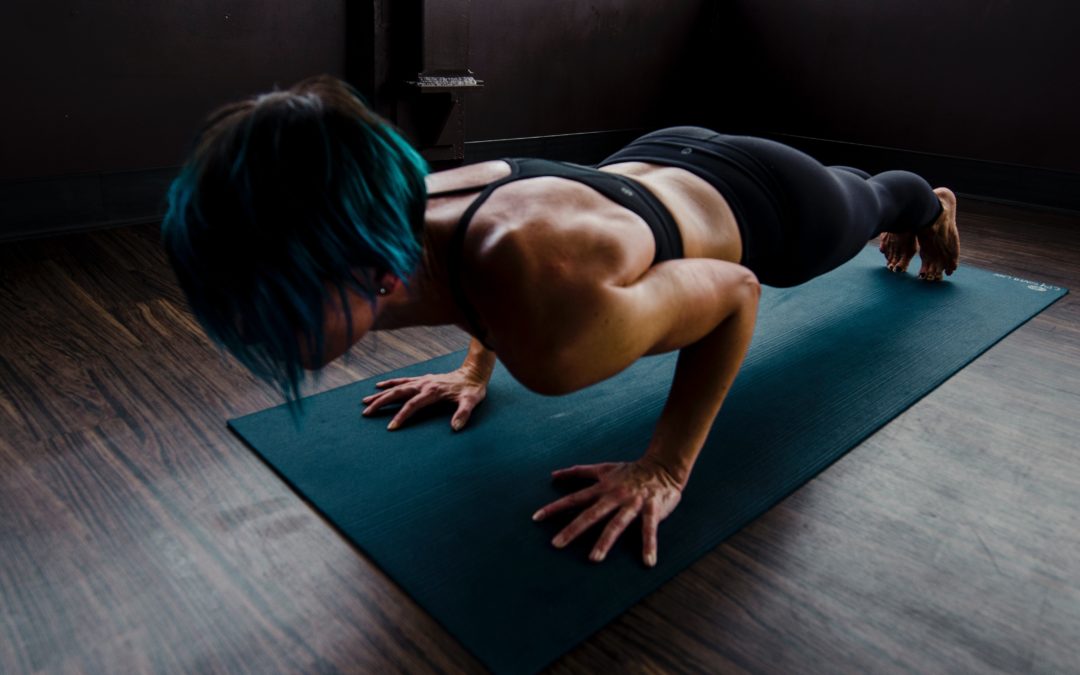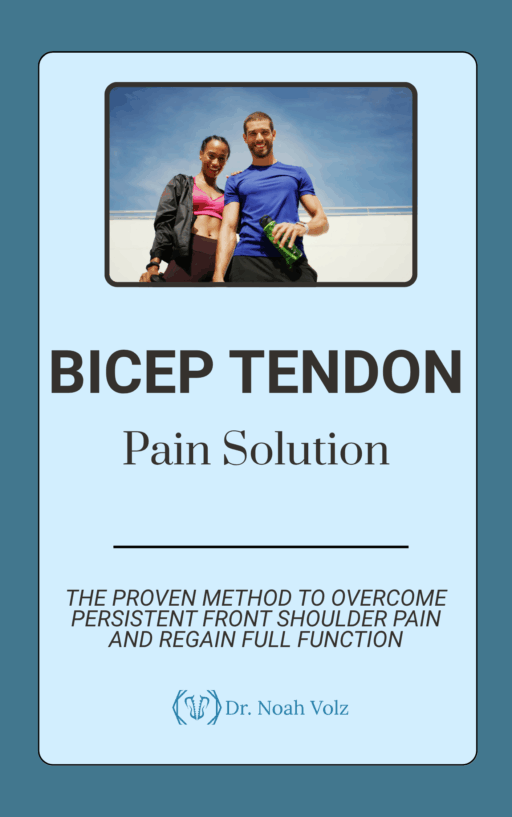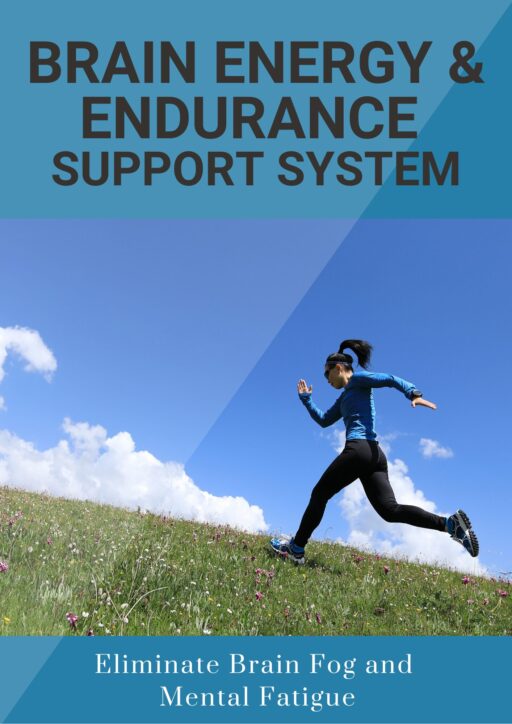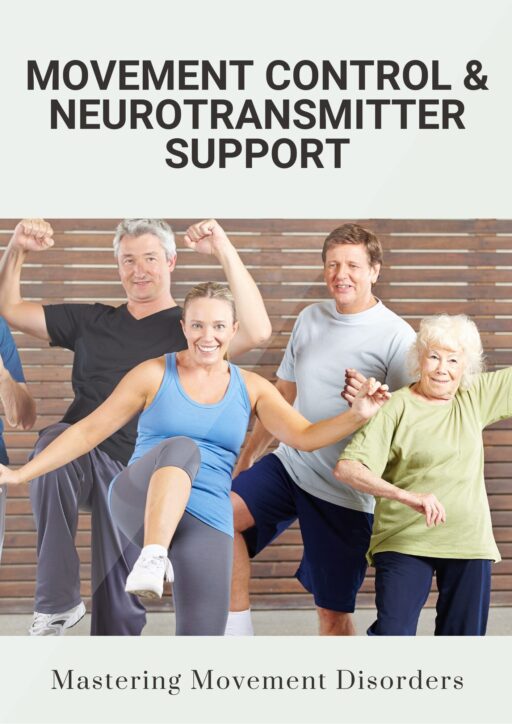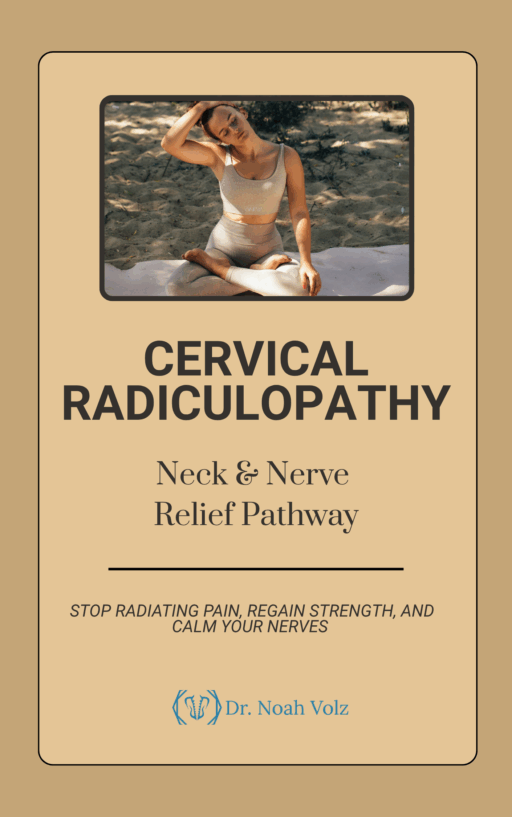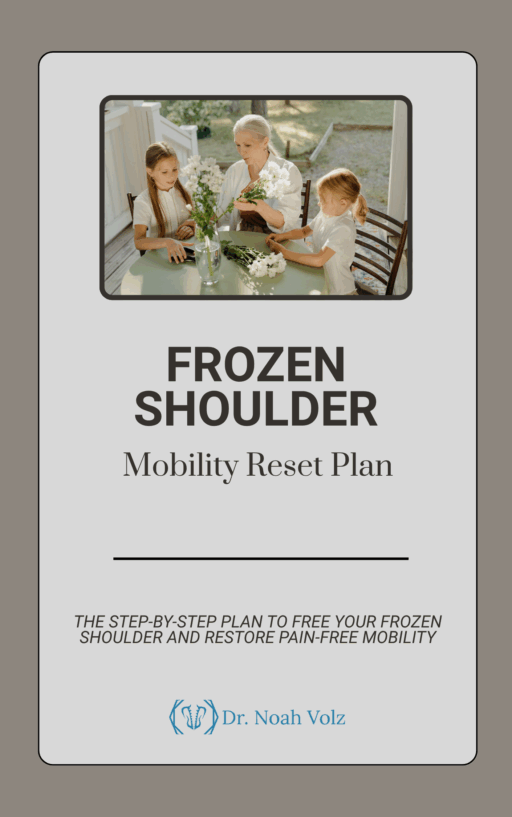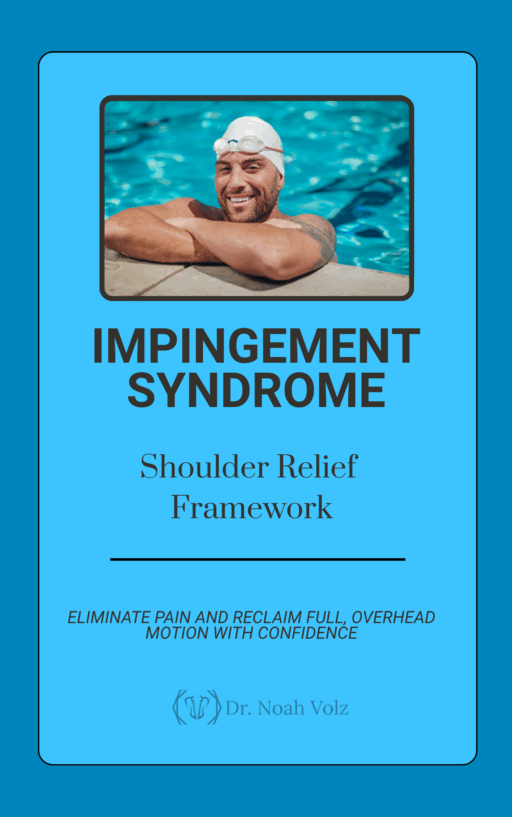The anatomy of the shoulder allows for great mobility at the expense of structural stability. The rotator cuff is meant to provide some stability. It is a combination of the tendons of the supraspinatus, infraspinatus, teres minor and subscapularis into the capsule of the glenohumeral joint. Three of the rotator cuff muscles, the supraspinatus, infraspinatus, and teres minor insert on the different aspects of the greater tuberosity of the humerus. The largest of the rotator cuff muscle, the subscapularis inserts on the lesser tuberosity of the humerus. The rotator cuff provides stability to the shoulder while the larger muscles move it. For example, when the deltoid muscle lifts the arm out to the side the rotator cuff muscles hold the arm bone in the socket so that it doesn’t shear upwards out of the socket. Another instance of rotator cuff stabilization is when the supraspinatus muscle decelerates an athlete’s arm after ball release so that the arm doesn’t come out of the socket.
Causes of rotator cuff injuries
Most people who have a shoulder injury think it is a rotator cuff injury and they are probably right. Rotator cuff injury is the most common problem to affect the shoulder. It accounts for 4.5 million physician visits per year. (1) The severity of the injury can vary. There can be a mild strain of a single tendon or a complete rupture of multiple tendons. Damage to the rotator cuff is rarely from trauma as the result of falling, pushing, pulling, throwing or lifting. Instead, over 90% of rotator cuff injuries develop from repetitive stress or age-related changes to the tendons. (2) The primary site of damage is the supraspinatus tendon where it lies just behind the bicep tendon. Initially the damage to the tendon will be small and over time with additional stress or aging the damage can result is a full thickness tear. Another name for a “full thickness tear” is a “complete tear.” This refers to a whole or a slit in the tendon. The tear starts in the supraspinatus and will often progress to involve the infraspinatus and subscapularis. (3)
The likelihood of repetitive stress causing damage to the rotator cuff is increased when there is obesity, high cholesterol, or a history of corticosteroid injection (especially in the shoulder). (4) If there is concurrent impingement it can impair the cuff’s ability to recover. This is because there are regions of the supraspinatus tendon that don’t have good blood flow. There are more tears in this region of the tendon. (5) This is in alignment with the fact that there is less blood flow in the arm and in the tendon during overhead activity.
The poor blood flow can be increased as we age because the blood flow to our tissue decreases. That can lead to age-related degenerative cuff tendon failure. (6) Over 95% of chronic rotator cuff tears are caused by impingement. (7) Impingement is more common in overhead activities and sports like baseball, swimming, volleyball, tennis, rowing, weightlifting and archery. Laborers who do jobs like carpentry, painting, wallpaper hanging, and cleaning windows are also more prone to impingement in the dominant arm. (8)
Rotator cuff injury is a degenerative tendinopathy instead of an inflammatory one. There is very little evidence of inflammation in and around the tendon. Instead, there is thinning of the tendon from degenerated and disorganized collagen fibers. This is a sign of a failed healing response. (9) Impingement and rotator cuff injury go hand in hand. The tendon is damaged and starts to degenerate. The weak tendon can’t oppose the forces of the larger deltoid muscle leading to impingement. This then damages the tendon further. (10) The damaged fibers are no longer able to their job and so the remaining fibers must work twice as hard which predisposes them to injury. (11)
Common symptoms of rotator cuff injuries
The symptoms associated with rotator cuff injuries show up differently depending on whether they are acute or chronic. Acute injuries are the result of throwing something or falling and hitting the shoulder. There is a “tearing” or “snapping” feeling accompanied by pain and weakness.
Chronic injuries begin silently and get worse as the damage to the tendon gets worse. (12) They begin with mild pain and weakness accompanied by clicking in the shoulder. The pain is primarily on the top and side of the shoulder, but it can travel down the arm to the elbow. The pain may progress to where you will have difficulty raising your arm overhead. The pain is worse at night especially if you lie on your shoulder. (13)
How to evaluate rotator cuff injuries
The first place to start is look for atrophy of the muscles such as the deltoid, infraspinatus or supraspinatus. There will be excess movement or clicking below the acromion of the shoulder. Range of motion will be limited in internal rotation and lifting the arm overhead. (14) Testing the strength of each rotator cuff muscle can be performed to see which muscles are involved. Orthopedic tests such as the Empty can test/Jobe test can be used to assess the function of the supraspinatus. (15) The Hornblower’s Sign/Patte Test can be used to assess the infraspinatus and teres minor function. (16) The Lift off test,” “Bear Hug test,” and “Belly Press test” can all be used to assess the subscapularis muscle. (17) If there is weakness from the tendon tear then the following orthopedic tests can be used: Drop arm test or External Rotation Lag Sign. (18) An assessment of the movement of the shoulder blade is also necessary since rotator cuff tears can be causes by improper scapulohumeral rhythm. This could be as obvious as shoulder blade winging or could be more subtle compromises in the kinetic chain that are related to hip mobility and core stability. (19)
X-rays may be needed in acute injuries of younger patients. If surgery is being considered then both ultrasound and MRI need to be used to detect a complete rotator cuff tear. (20) 50% of people over 70 years of age will have asymptomatic rotator cuff tears and so imaging is not always helpful. (21)
Upper cervical chiropractic for rotator cuff injuries
In most cases chiropractic is effective at managing rotator cuff tears. If there is a full thickness tears greater than 1 cm, symptoms more than one year and functional weakness then chiropractic won’t be able to help. This is also true of tears larger than 1 cm) in young athletes. Begin with modifying your activities to reduce stress on the rotator cuff. Avoid painful overhead activity, carrying heavy objects, and sleeping on the affected side. Sleep on the opposite side with a pillow between your affected arm and the trunk. Do not immobilize the shoulder as that will delay recovery. Use myofascial release on the pectoral muscles, infraspinatus, teres minor, subscapularis, trapezius, levator and posterior capsule. Use chiropractic adjustments for restrictions in the scapulothoracic, glenohumeral joint, and cervicothoracic spine. (22)
NSAIDs inhibit collagen synthesis and will interfere with natural healing so they are not recommended. (23) PRP injections do promote tendon healing, but have had poor outcomes with rotator cuff tendinopathy. (24) If there is not improvement in 3-6 months then an orthopedic consult is warranted. Do not do rotator cuff surgery concurrent with biceps tendon repair because it will be less effective. (25)
Exercises to help heal rotator cuff injuries
Conclusion
If rotator cuff injury is a part of your life and you are looking for an answer then I can help. I can help figure out what the cause of the rotator cuff injury is. Use chiropractic adjustments and massage to get you out of pain and teach you the exercises you will need in order to build a resilient shoulder that is immune to pain. If you are ready to try this approach schedule with me today. Still looking for more information? Check out my eBook on Chronic Neck Pain.
References
1. Oh LS, Wolf BR, Hall MP, Levy BA, Marx RG. Indications for rotator cuff repair: a systematic review. Clin Orthop Relat Res 2007;455:52-63
2. Kibler WB, Chandler TJ, Pace BK. Principles of rehabilitation after chronic tendon injuries. Clin
Sports Med 1992;11:661–73
3. Ozaki J, Fujimoto S, Nakagawa Y, Masuhara K, Tamai S. Tears of the rotator cuff of the shoulder associated with pathological changes in the acromion: a study in cadavers. J Bone Joint Surg Am 1988;70:1224-30
4. Kibler, WB. Rehabilitation of rotator cuff tendinopathy. Clin Sp Med. 2003;22(4):837-847.
5. Tashjian RZ Epidemiology, natural history, and indications for treatment of rotator cuff tears. Clin Sports Med. 2012 Oct;31(4):589-604.
6. Wendelboe AM, Hegmann KT, Gren LH, Alder SC, White GL Jr, Lyon JL. Associations between body-mass index and surgery for rotator cuff tendinitis. J Bone Joint Surg Am 2004;86:743-7.
7. Galatz LM, Silva MJ, Rothermich SY, Zaegel MA, Havlioglu N, Thomopoulos S. Nicotine delays tendon-to-bone healing in a rat shoulder model. J Bone Joint Surg Am 2006;88:2027-34
8. Wei AS, Callaci JJ, Juknelis D, et al. The effect of corticosteroid on collagen expression in injured rotator cuff tendon. J Bone Joint Surg Am 2006;88:1331-8.
9. Wiggins ME, Fadale PD, Ehrlich MG, Walsh WR. Effects of local injection of corticosteroids on the healing of ligaments: a follow-up report. J Bone Joint Surg Am 1995;77:1682-91.
10. Blair B, Rokito AS, Cuomo F, Jarolem K, Zuckerman JD. Efficacy of injections of corticosteroids for subacromial impingement syndrome. J Bone Joint Surg Am 1996;78:1685-9.
11. Yamaguchi K, Ditsios K, Middleton WD, Hildebolt CF, Galatz LM, Teefey SA. The demographic and morphological features of rotator cuff disease: a comparison of asymptomatic and symptomatic shoulders. J Bone Joint Surg Am 2006;88:1699-704
12. Yamamoto A et al. Prevalence and risk factors of a rotator cuff tear in the general population. Shoulder Elbow Surg. 2010 Jan;19(1):116-20.
13. Duckworth DG, Smith KL, Campbell B, Matsen FA III. Self-assessment questionnaires document substantial variability in the clinical expression of rotator cuff tears. J Shoulder Elbow Surg 1999;8:330-3
14. Putnam CA. Sequential motions of body segments in striking and throwing skills: Description and explanations. J Biomech 1993;26(suppl 1):125-135
15. Laudner KG, Myers JB, Pasquale MR, Bradley JP, Lephart SM. Scapular dysfunction in throwers with pathologic internal impingement. J Orthop Sport Phys Ther 2006; 36:485-494
16. Kibler WB, Sciascia AD, Thomas SJ. Glenohumeral internal rotation deficit: Pathogenesis and response to acute throwing. Sports Med Arthrosc 2012;20:34-38.
17. Jobe FW Maoynes DR Deleniation of diagnostic criteria and a rehabilitation program for rotator cuff injuries. Am J Sports Med 10:336-339 1982
18. Robb AJ, Fleisig G, Wilk K, Macrina L, Bolt B, Pajaczkowski J. Passive ranges of motion of the hips and their relationship with pitching biomechanics and ball velocity in professional baseball pitchers. Am J Sports Med 2010;38:2487-2493.
19. Toyoshima S, Hoshikawa T,MiyashitaM. Contributions of body parts to throwing performance. In: Biomechanics IV. Baltimore: University Park Press, 1974;169-174.
20. Murrell GA, Walton JR. Diagnosis of rotator cuff tears. The Lancet. 2001;357(9258):769-770
21. Teefey SA, Rubin DA, Middleton WD, Hildebolt CF, Leibold RA, Yamaguchi K. Detection and quantification of rotator cuff tears: comparison of ultrasonographic, magnetic resonance imaging, and arthroscopic findings in seventy-one consecutive cases. J Bone Joint Surg Am 2004;86:708-16
22. Neer
23. Iannotti JP, Ciccone J, Buss DD, et al. Accuracy of office-based ultrasonography of the shoulder for the diagnosis of rotator cuff tears. J Bone Joint Surg Am 2005;87:1305-11.
24. Milgrom C, Schaffler M, Gilbert S, van Holsbeeck M. Rotator-cuff changes in asymptomatic adults: the effect of age, hand dominance and gender. J Bone Joint Surg Br 1995;77:296-8
25. Longo UG et al. Conservative treatment and rotator cuff tear progression. Med Sport Sci. 2012;57:90-9.
-

Bicep Tendon Pain Solution
$50.00 -

Brain Detoxification & Recovery System
$50.00 -

Brain Energy and Endurance Support System
$50.00 -

Brain-Based Movement and Motor Control Training
$50.00 -

Centralized Low Back Pain
$50.00 -

Cervical Radiculopathy: Neck and Nerve Relief Pathway
$50.00 -

Complex Low Back Pain
$50.00 -

Complex Radiating Low Back Pain
$50.00 -

Cross-Pattern Low Back Pain
$50.00 -

Frozen Shoulder Mobility Reset Plan
$50.00 -

Impingement Syndrome: Shoulder Relief Framework
$50.00 -

Mastering Brain Senses: Rebuild Your Hearing, Vision, and Body Awareness
$50.00

